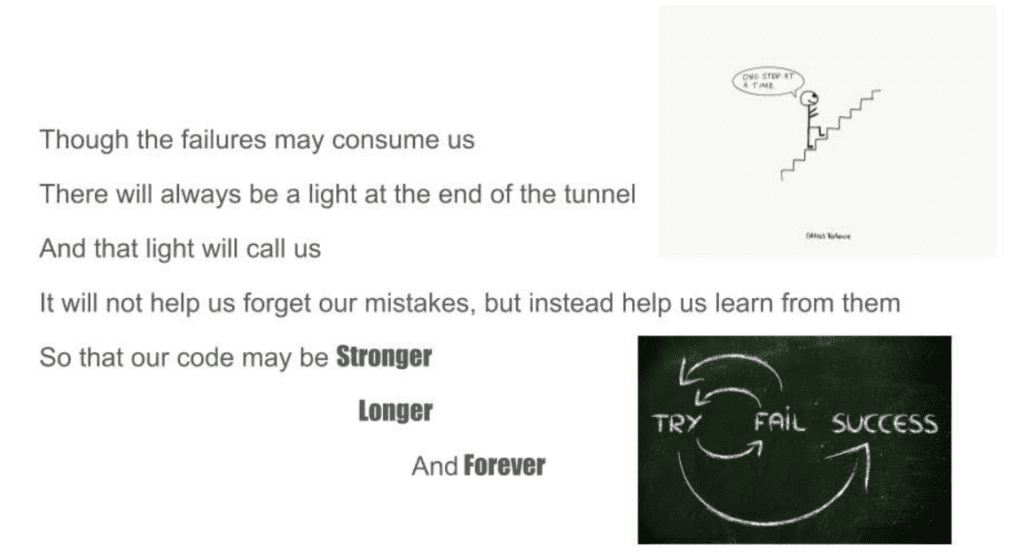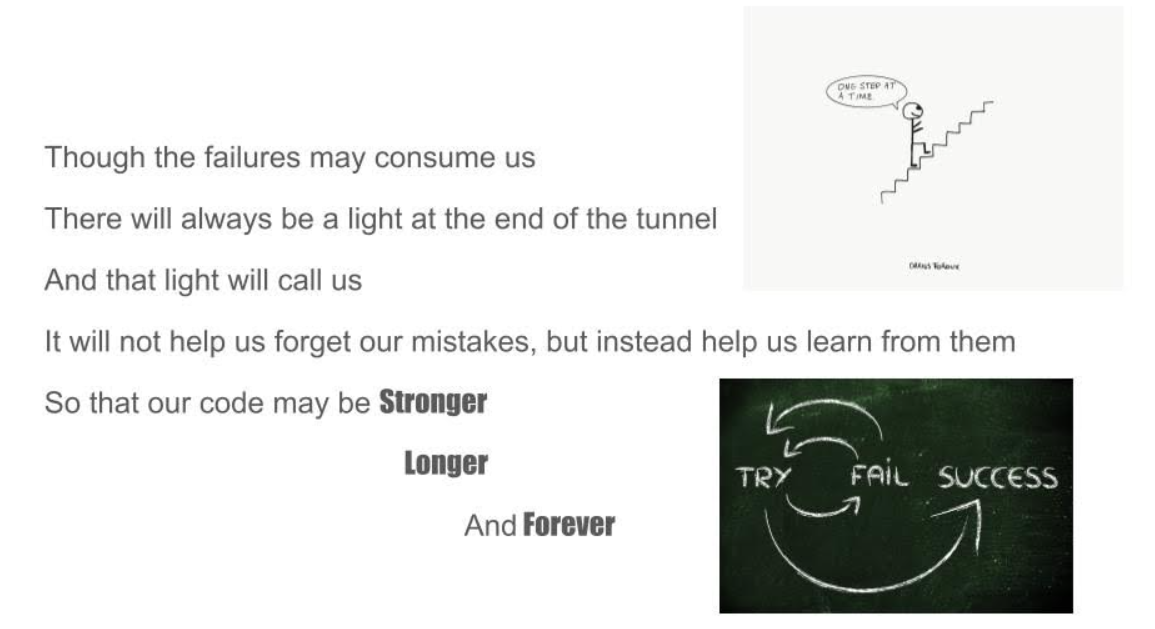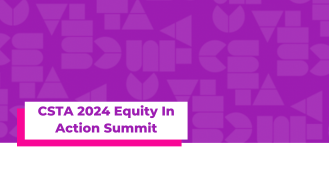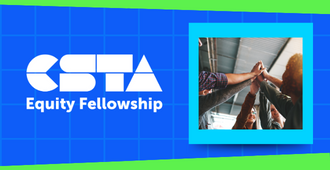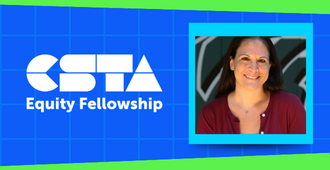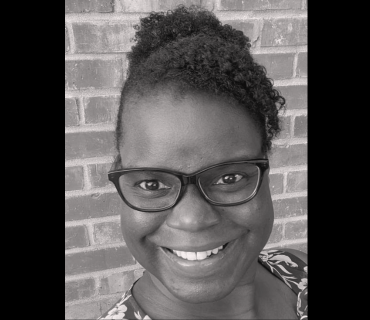
This month we speak with Dr. Abigail Joseph who currently works as the Middle School Director of Learning, Innovation, and Design at The Harker School in San Jose, California.
Dr. Abigail Joseph currently works as the Middle School Director of Learning, Innovation, and Design at The Harker School in San Jose, California. She is a member of the inaugural cohort (2019-2020) of CSTA’s Equity Fellowship, sits on the CSTA Board of Directors, and serves as an MIT Master Trainer for App Inventor. Beyond teaching, making, and the arts, her current passion is edstoria.com and uncovering ways to help teachers not vanish from the educational landscape. She tweets at @drabigailjoseph. She holds a B.S.E in computer science from Princeton University and an M.S./Ph.D. in computer science from the University of California at Santa Cruz.
Abigail, recently the phrase/feeling of “hitting a pandemic” wall has been circulating, with us experiencing almost a year of the effects of COVID-19 and quarantining. Can you relate to this?
Yes, I’ve hit this wall over and over again. I would describe this sensation as feeling very overloaded, wanting some real rest, and not knowing what rest looks like. Our place of rest is now a place of work. My head continuously feels clouded and that is frustrating.
The last time we interviewed you at CSTA, we talked about inequity in the classroom and desired outcomes of being an Equity Fellow. As an alumna reflecting, what would you like to share?
It was an amazing experience. I went into the fellowship with the mindset that you cannot achieve great work in the world without a team, and I was excited to connect with others doing like-minded equity work. My cohort pushed my thinking in the space of CS education. Working with current fellows has given me inspiration to keep thinking about equity and access within CS.
Do you still stay in touch with some of your Equity cohort?
I am connected with Rebecca Lucker; recently, I interviewed her for my passion project edstoria. Edstoria is focused on helping teachers not vanish from the education landscape. This project was created after I had reached a moment in education where I was not loving what I was doing anymore. It was hard to conceptualize what was next in my professional life. My creativity was missing. We need creativity to help elevate our mood to a play of joy and stay inspired in this challenging profession. Teachers right now are stretched and overwhelmed. Additionally, Rebecca and I presented a workshop together at the CA STEAM Symposium on the work we did together as Equity Fellows. My creativity soars when I get to collaborate with others.
What does creativity look like for you?
It means investing the time to do something creative for myself at least once a week, but honestly, that isn’t happening. I should say I get to create weekly working on edstoria, but I am not doing lots of projects as I would like to. As a CS teacher and manager of a makerspace, I teach kids and adults how to make things, but I often do not build or produce something, so that I lift spirits and feel joyful in the process of creating. Consider the example of art and music teachers. They are invested in their craft in and out of the classroom; what do CS teachers need to support and create for themselves?
You are presenting at an upcoming PD opportunity, the Equity in Action Summit, in March. Can you tell us a little about your session?
The biggest takeaway from my session is that CS goes beyond programming. CS is a tool like crayons, paper, pens, or Google slides are a tool in a classroom; it’s a way we can connect to our world and connect students to their world.
CS teachers and advocates are on different paths of their journey of promoting equity in CS. Can you highlight what a teacher/advocate can expect to take away from the summit?
Expect to take away one actionable item that you can take back to your classroom. That action doesn’t have to be significant. Everyone is at a different place in their equity journey. If you are further along in that process consider, how can I refine what I do in my classroom to make it better? How do I express to my administration that CS teachers need more PD? Also, acknowledge that we are a year into the pandemic, and you aren’t going to absorb everything from the summit or PD in general. Focus on one actionable item. As Charity Freemanays, it’s a process to become a “Chief Equity Officer” of your classroom.
Throughout this year, teachers have been navigating their role in facilitating and holding space for conversations after injustices and political events like the murder of George Floyd and the Capitol building’s political insurrection. Can you share your thoughts?
I work on helping teachers bring innovative pedagogy into the classroom. I can hear and see the perspective of a CS teacher like a math teacher that we do not have these “touchy-feely” conversations in our classrooms. Conversations like these are more suited to the English, history, and social science disciplines where discussions on real-world topics happen on a regular basis. I believe any teacher can create a brave space to have courageous conversations. It takes a willingness to be vulnerable, a willingness not to have the answers to be comfortable having these conversations in STEM disciplines. You know your class the best, and reading the energy of the room and understanding your student’s journey helps you to take the risk to introduce complex topics into your lessons.
Did you have a conversation with your classroom around the insurrection in early January?
Yes, it dawned on me that I could present a space where students could reflect safely. I conducted a visual thinking exercise called: “See, Think, Wonder” I took an artifact, which was a picture of Nancy Pelosi’s desk after her office was invaded. We did an activity that was an observation of the photograph; What do you see? What does this make you think? What are you wondering about? What questions do you have? It’s important to remember that some of your students aren’t going to be connected to the topic or have a deep desire to hold space for these conversations and others will. This is the dance of teaching.
What is your perspective on Black History Month?
Black History Month has traditionally had this narrative around the Black struggle and oppression. We (as teachers and CSTA) have the opportunity to evaluate the dialogue and present Black innovation, leadership, and Black Excellence in CS. As a CS teacher or advocate, you need to elevate Black excellence and Black history all year round. We should be fertilizing and growing the seeds of equity and recognizing Black impact throughout our teaching.
Can you talk a little about this lesson you tweeted about creating a CS lesson connecting Computational Concepts to Amanda Gorman’s Poem inauguration poem?
I had a former peer put out a challenge to create a lesson from the poem. To take up the challenge, I had to be willing to deviate from my previous lesson plan, get creative, and to be okay with not knowing the outcomes. In the end, I created a four-part lesson for students that consisted of watching the inauguration poem, reviewing the transcript, reviewing computational thinking concepts, and producing a project. Each group of students needed to pick aspects of the poem that aligned with computational thinking concepts. Then I had them watch a Ted Talk that Amanda Gorman had given, “Using Your Voice as a Political Choice,” that speaks about how art is political and creative. I had prompts aligning quotes from the transcript of the talk to their experiences and stereotypes in CS. There was so much in that Ted talk relatable that was relatable to our classroom, such as the concept that anyone can be a poet, much like anyone can learn CS. In the end, they took their reflections over the course of 4 periods or so and wrote a stanza that became our class poem, The Hill We Climb – Computer Science Edition.
What would you like to share with this audience?
As I am looking at the last stanza of the poem my students created, I would say it is ok not to have the answers and make mistakes. Not having solutions is what keeps us curious and not having answers helps us develop as teachers. Take a risk and you will often experience results that go beyond what you could ever imagine.

